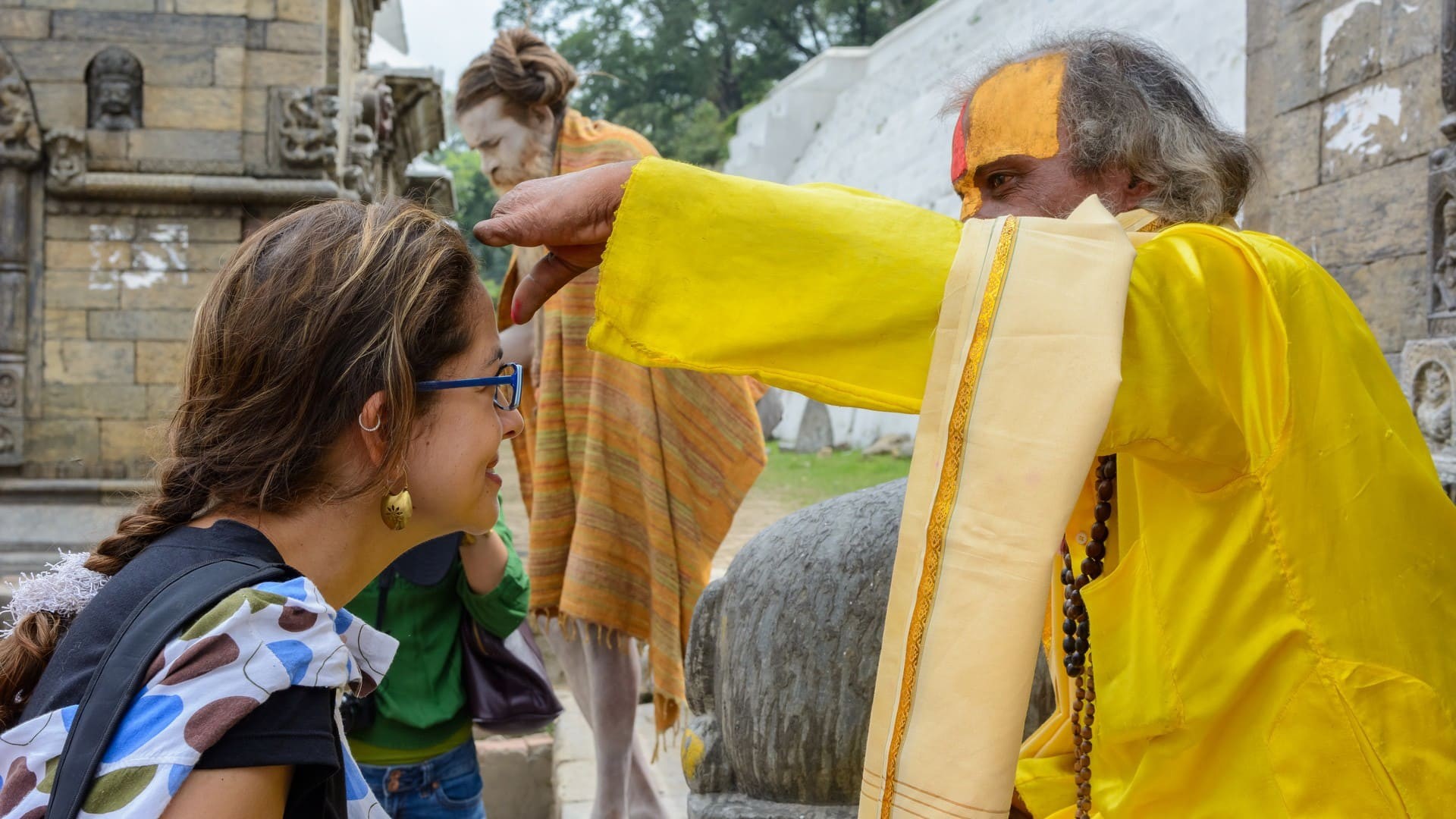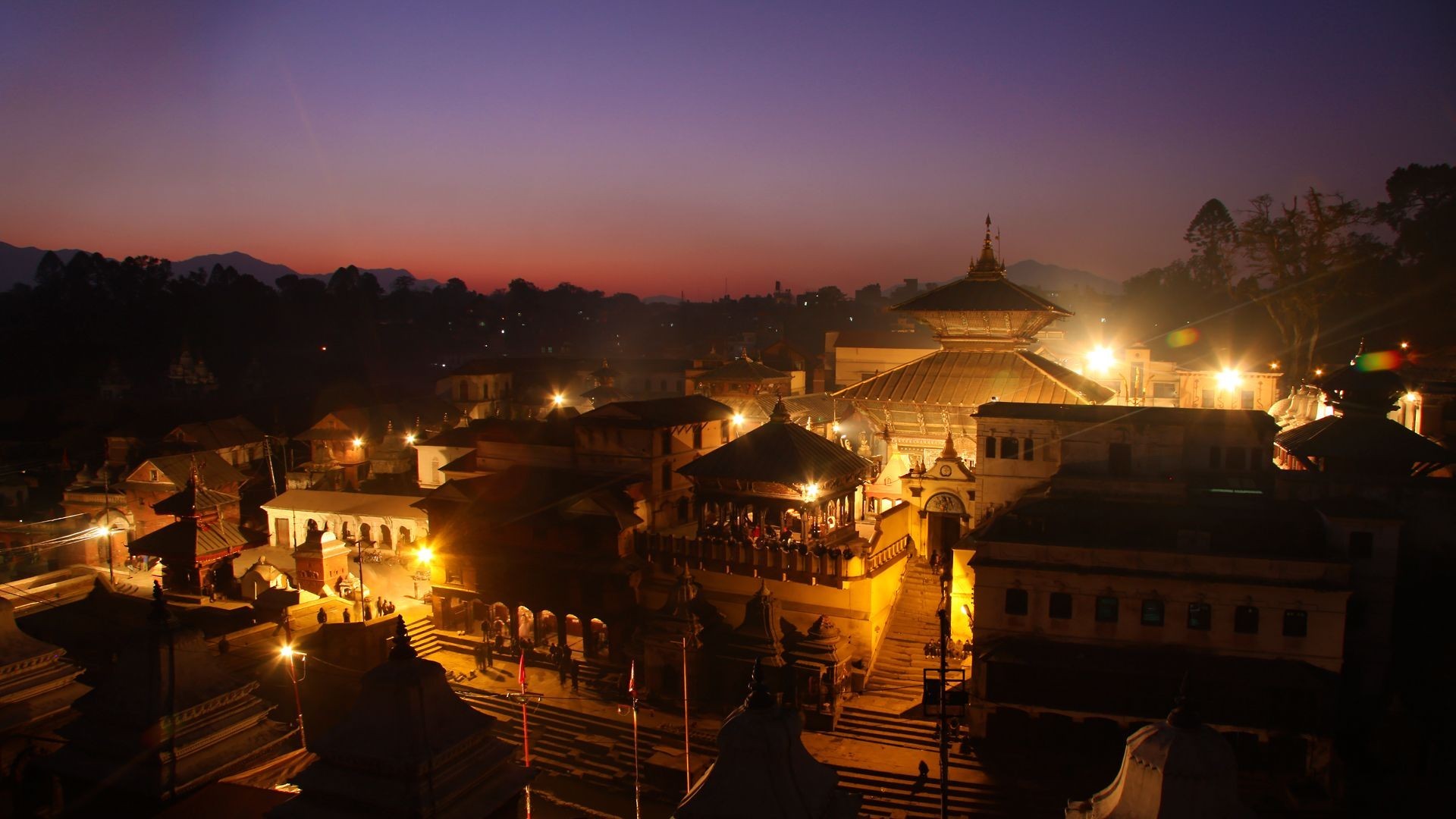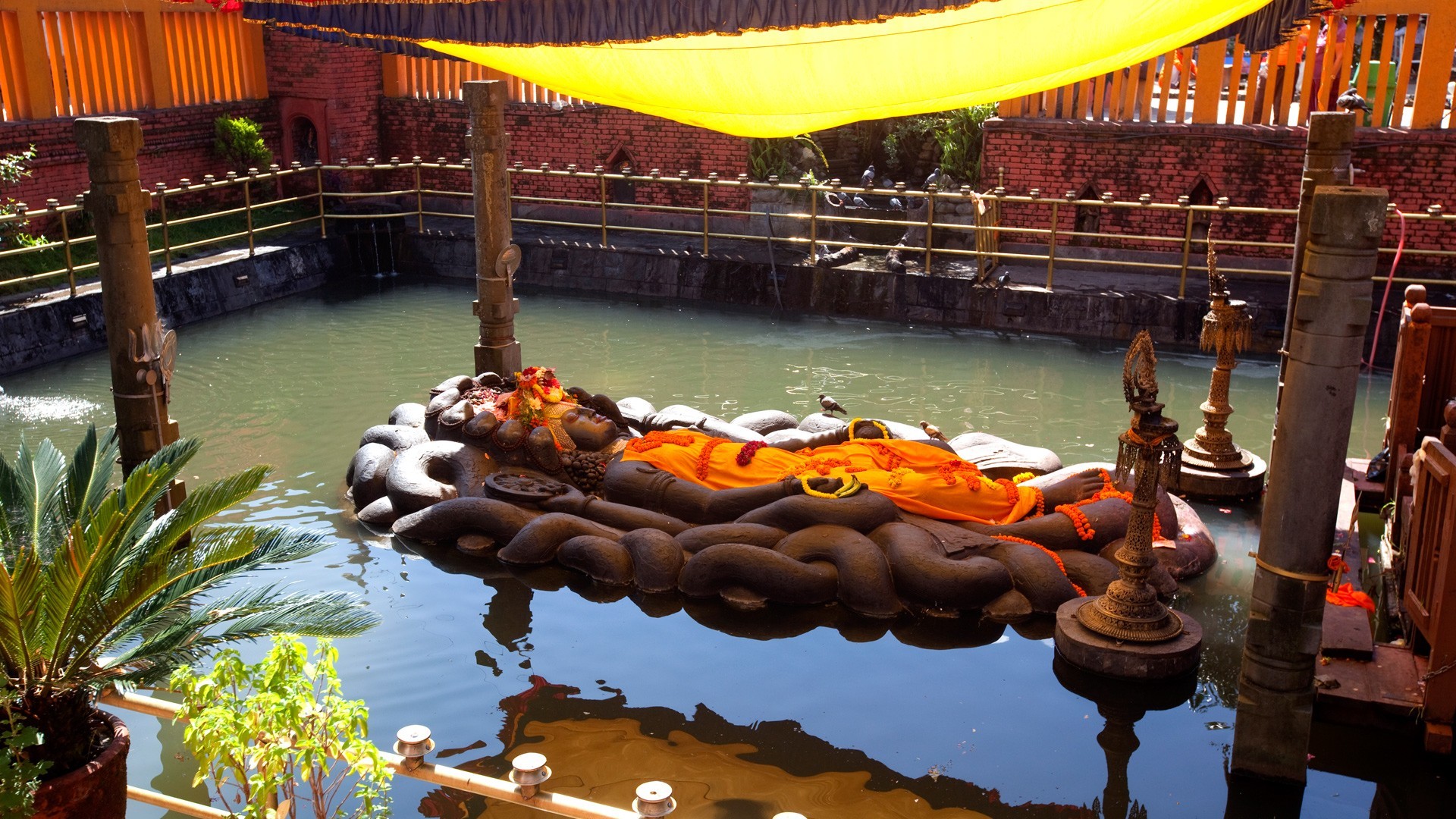-
Places to go
-
Things to do
-
Adventure
Nature
Culture
Wellness
Others
-
-
Festivals & Events
-
Festivals
Event Calendar
-
-
Plan Your Trip
-
Trip Ideas
Travel Details
Book Your Trip
-
- Travel Updates
Pashupatinath
Pashupatinath
Pashupatinath
Pashupatinath Temple
This temple situated on the banks of the holy River Bagmati is the most revered Hindu temple in Nepal. The main temple complex is open only to the Hindus; non-Hindus must satisfy themselves by observing from the terraces just across the Bagmati River to the east. As a mark of reverence and tradition, leather items that include shoes, belts and cameras are forbidden within the temple complex and must be left outside. Photography is strictly prohibited.
The most important festival observed here is Shivaratri, or ‘the Night of Lord Shiva’ - the night Lord Shiva self-originated - when devotees and pilgrims from far and wide across Nepal and India, including sadhus (barely attired holy men with long locks of hair and smeared in ashes) and ascetics, throng the temple to have a darshan (glimpse) of the sacred Shiva lingam. The other holy occasion when devotees descend to the temple in large numbers is on Teej (a festival solely observed by Hindu women) in mid-September. The whole temple complex and the adjoining areas turn into a sea of red as women draped in their bridal red sarees and wearing yellow or green bead necklaces offer prayers for the well-being, prosperity, and longevity of their husbands. The temple is just as crowded with devotees every fortnight on the 11th day of the lunar month on Ekadashi. Among the Ekadashis, the most prominent and holiest two are the Harishayani Ekadashi in Ashadh (June/July) and four months later, Haribodhini Ekadashi in Kartik (October/November.
The Slesh Mantak forest encircles the holy site where monkeys abound, and deer is reared in captivity to revere the animal form that Lord Shiva took as per the Swasthani Brata Katha.
The Pashupati Bagmati Aarati is one of the most engaging rituals at this pilgrimage site. Devotees from all over the country participates in this ritual whenever they visit Pashupatinath Temple.
Guhyeshwari
It is one of the famous Shakti Peeths in Nepal and is located on the banks of the Bagmati River near the Pashupatinath Temple. Here too, non-Hindus are denied entry. The goddess is replicated here in the form of a silver-plated waterhole which is kept covered by a silver kalash (auspicious water jar). The Swasthani Brata Katha chronicles the origin of the temple. Following the death by self-immolation in a fire by his beloved consort Sati Devi, a grief-stricken Shiva wandered aimlessly across the earth carrying her dead body on his shoulders. In the course of his directionless wandering, the corpse began to rot, and parts of the body fell at different places. Wherever those body parts fell, a Shakti Peeth originated, and the Mother Goddess in her manifestation as the consort of Lord Shiva came to stay there. Gods, sages and celestial beings came to the Shakti Peeths to do penance or offer worship to the goddess (Ishwari), and thus these spots became holy places. It was at this spot that the Guhya (anal portion) of the corpse fell, and hence this place came to be known as Guhyeshwari.
Access: The temple lies 5 km to the east of the city center. Besides taxis, microbuses or three wheelers called tempos will drop you at Gaushala from where it is a short walk to the temple.
Nepal Tourism Board is a national tourism organization of Nepal established in 1998 by an Act of Parliament in the form of partnership between the Government of Nepal and private sector tourism industry to develop and market Nepal as an attractive tourist destination. The Board provides platform for vision-drawn leadership for Nepal’s tourism sector by integrating Government commitment with the dynamism of private sector.












